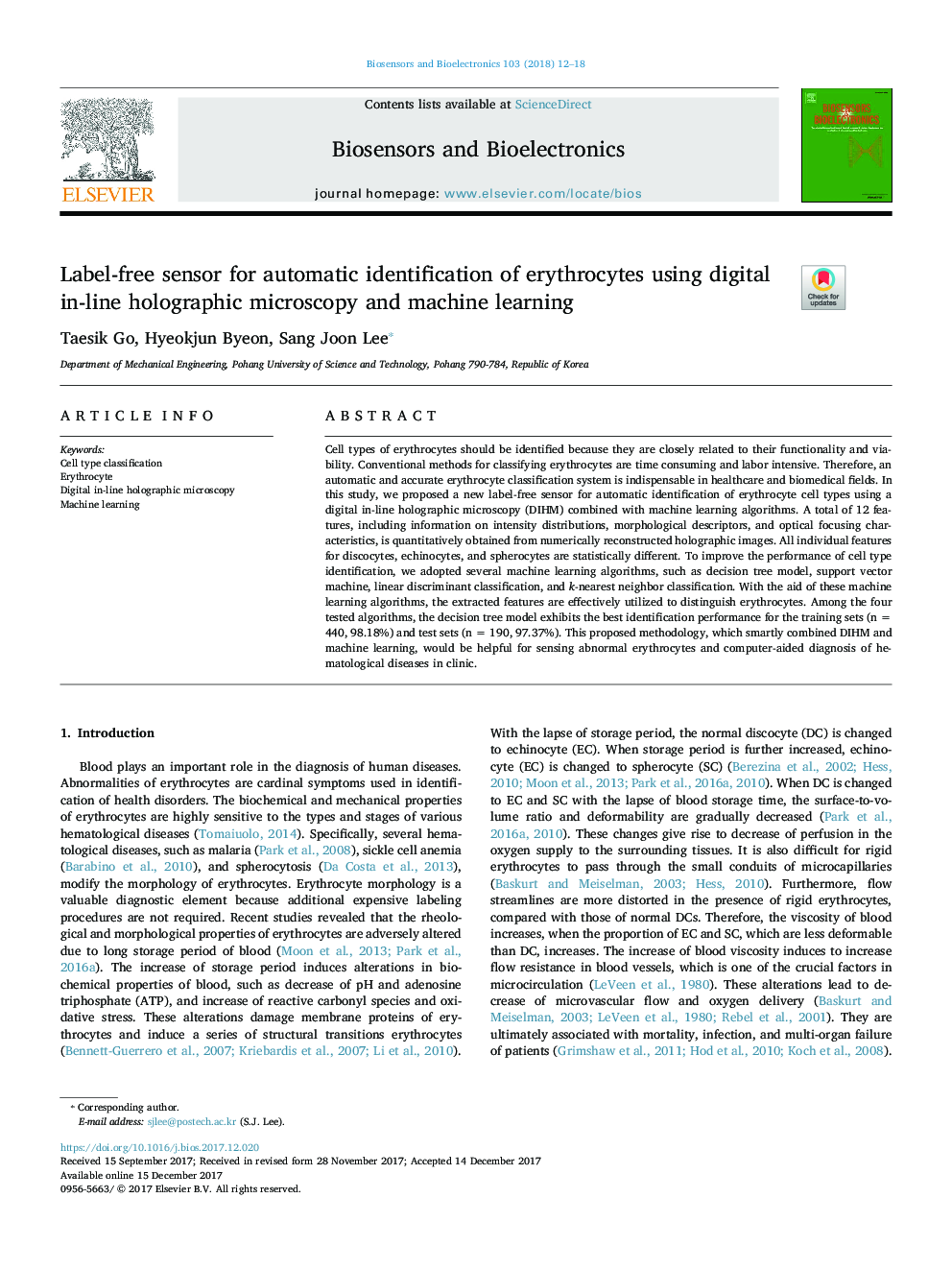| Article ID | Journal | Published Year | Pages | File Type |
|---|---|---|---|---|
| 7229796 | Biosensors and Bioelectronics | 2018 | 7 Pages |
Abstract
Cell types of erythrocytes should be identified because they are closely related to their functionality and viability. Conventional methods for classifying erythrocytes are time consuming and labor intensive. Therefore, an automatic and accurate erythrocyte classification system is indispensable in healthcare and biomedical fields. In this study, we proposed a new label-free sensor for automatic identification of erythrocyte cell types using a digital in-line holographic microscopy (DIHM) combined with machine learning algorithms. A total of 12 features, including information on intensity distributions, morphological descriptors, and optical focusing characteristics, is quantitatively obtained from numerically reconstructed holographic images. All individual features for discocytes, echinocytes, and spherocytes are statistically different. To improve the performance of cell type identification, we adopted several machine learning algorithms, such as decision tree model, support vector machine, linear discriminant classification, and k-nearest neighbor classification. With the aid of these machine learning algorithms, the extracted features are effectively utilized to distinguish erythrocytes. Among the four tested algorithms, the decision tree model exhibits the best identification performance for the training sets (n = 440, 98.18%) and test sets (n = 190, 97.37%). This proposed methodology, which smartly combined DIHM and machine learning, would be helpful for sensing abnormal erythrocytes and computer-aided diagnosis of hematological diseases in clinic.
Keywords
Related Topics
Physical Sciences and Engineering
Chemistry
Analytical Chemistry
Authors
Taesik Go, Hyeokjun Byeon, Sang Joon Lee,
